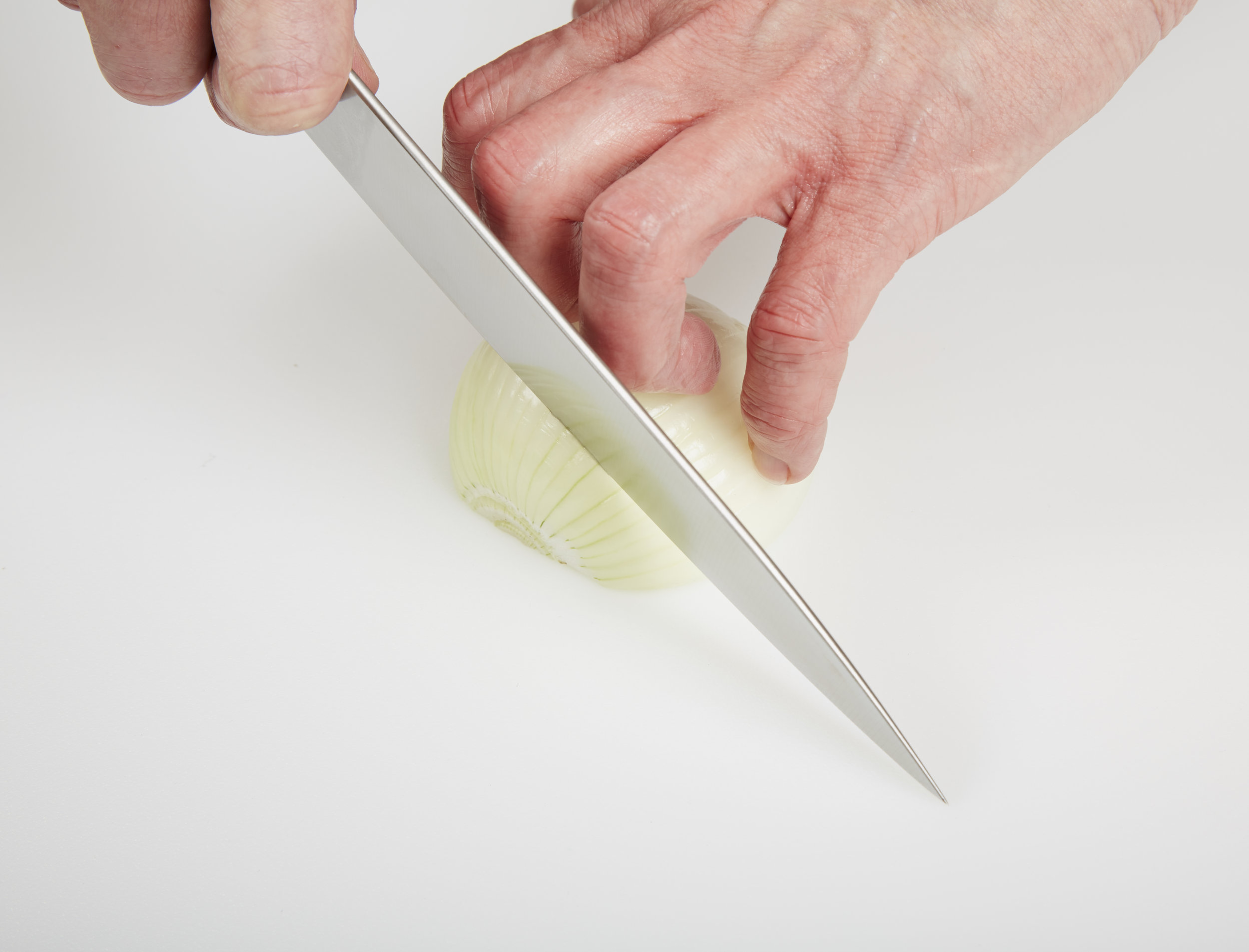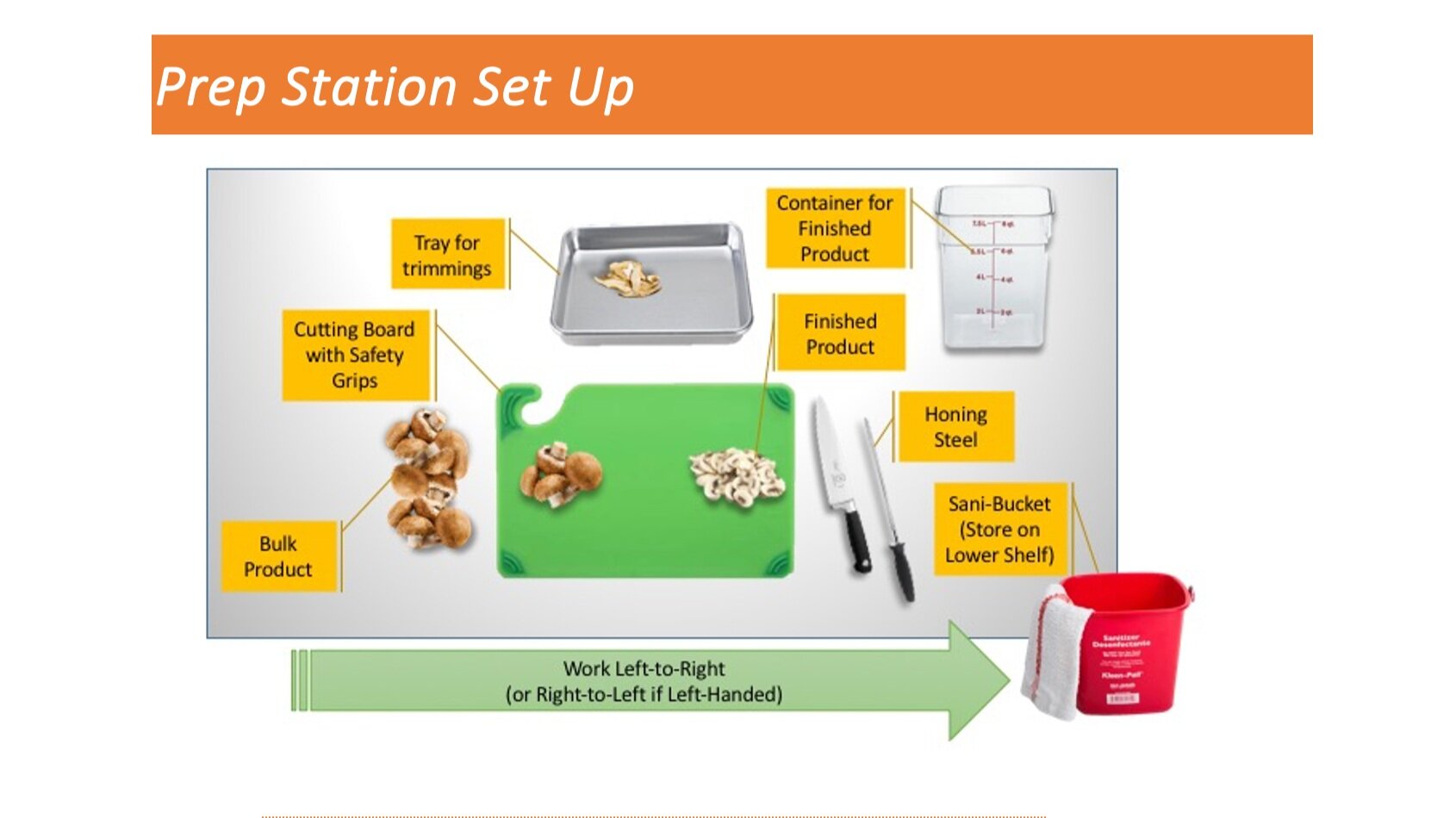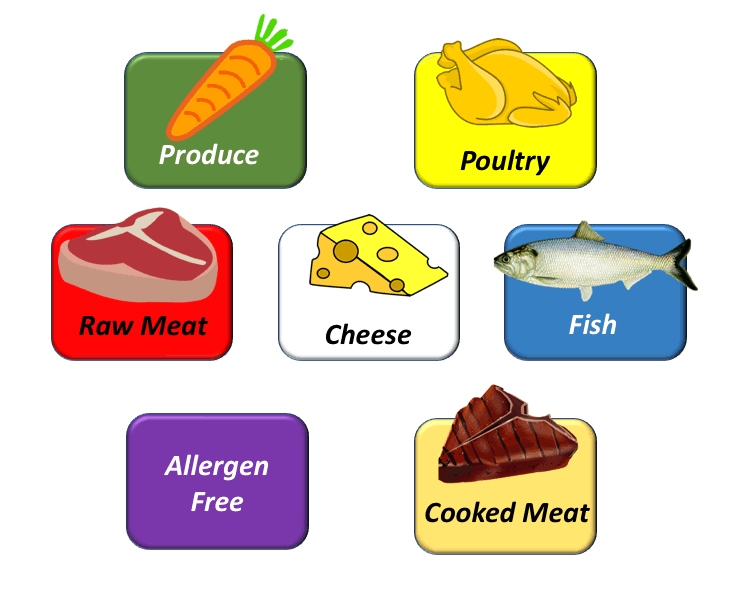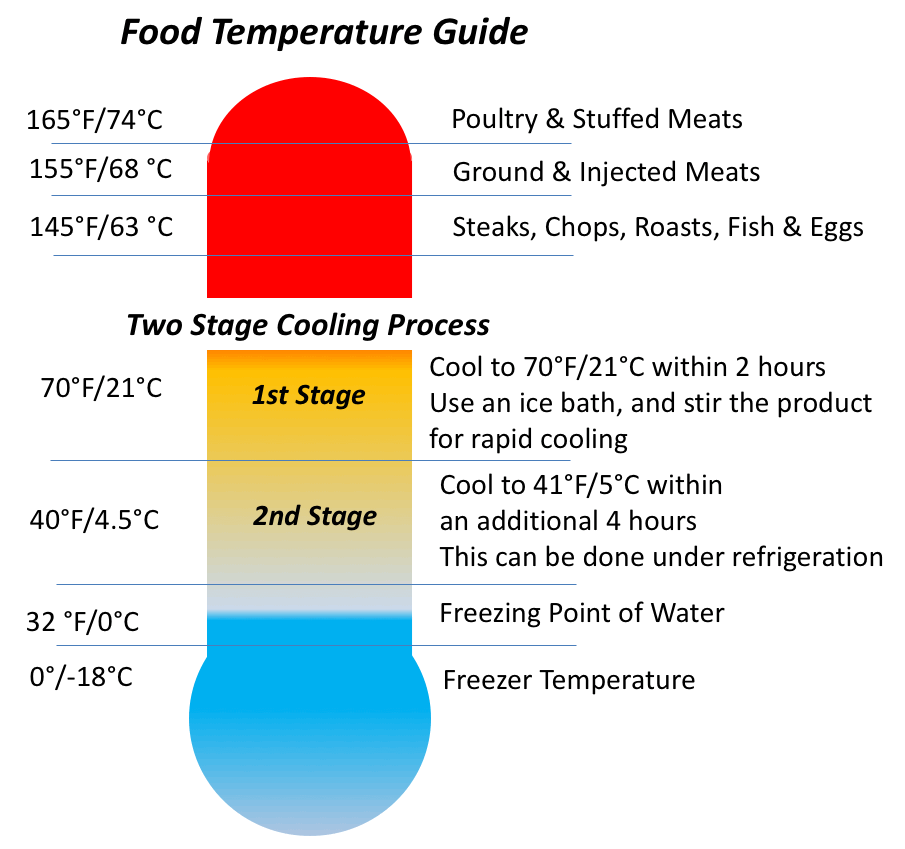Mise en Place
The French term “mise en place” translates as “implementation” and is commonly used in a professional kitchen to describe the state of getting prepared for service. Mise en place is a series of steps and stages that can be pretty complex and require many hours, often longer than the actual service time. Mise en place encompasses food preparation, including cutting vegetables, butchering meats, fish, and poultry, and pre-cooking items to save time. Mise en place also includes the setup of a station, the assembly of tools and small wares, and the clean-up of the station once service is complete. Mise en place requires good organizational habits to be in a proper state of readiness.
How to Get Organized
The best chefs know how to organize for optimal production and efficiency. Their organization begins with a professional attitude, arriving early, appropriately attired, and having an adequately honed cutlery set. Here are additional tips to help you be productive.
Start with a Prep List
Professional cooking requires food to be prepped in stages and batches to various degrees of readiness and then finished and assembled to order on the line. All operations should have a checklist to work from so that nothing is forgotten in the prep stage. If the operation you work at doesn’t have a prep sheet, make one up yourself. Analyze every menu item and every recipe to determine what can be prepped ahead without losing quality. Soups and sauces can usually be prepared ahead of time and held in a holding unit. Steaks and fish can be cut and seasoned but must be cooked to order. Risotto can be par-cooked and finished to order
Once you determine what must be done, you must decide how much each item should be prepped. By analyzing sales, you can see how much was sold on a given day of the week. Even though most restaurants now have sophisticated Point-of-Sale (POS) systems that provide this data, it’s a good idea for every station to have a form that records how much was prepped and used for each shift.
Work Station Organization
Generally, you divide your work day into prep and service phases. Prep work is everything that needs to be done before you can open for service. A prep station setup may be a little less formal than at the actual service time; however, the organization during prep is just as important as the actual line work. If you’re not organized properly, you won’t complete your work in time for service.
Every kitchen station, whether a prep station or a line station, should be set so that all tools, equipment, and mise en place are within arm’s reach, from left to right and from top to bottom. This will minimize extra steps and make your timing more efficient. Make a checklist of everything you need for your station and do a check-off at the beginning of service.
Work Flow
Look at your station for an overall sense of workflow. When setting up your line station, consider which menu items need the most room to execute the plan accordingly. Workflow always has challenges; sometimes obstacles arise, such as changing a setup because of other factors, such as the rollout of a new menu item. Be prepared to modify the workflow of a station in any way that will allow the best execution.
Color-Coded Cutting Boards
Station Setup Checklist
Keep food, tools, and utensils within easy reach
Set up in a continuous flow from left to right or right to left
Grab handfuls of bulk product and place them next to the cutting board
Move the finished product off the cutting board for better efficiency
Keep sharpening steel handy for periodically honing your knife
Keep a sani-bucket off the work table, store it on the lower shelf away from food
Have a container of tasting spoons near you when you are cooking; also, have a container for the soiled tasting spoons as well
Consolidate Prep
Many dishes have common ingredients that can be prepped together for better efficiency. Some preps may be shared among more than one station. Good communication and teamwork help to streamline kitchen prep for you and your fellow cooks. In some kitchens, prep cooks will handle the bulk preparation and distribute it to stations as needed. It is common to do simple tasks like peeling onions or chopping garlic during slow times to stay ahead of the game.
Do Your Prep Work
Nothing is worse than running out of food in the middle of a rush and having to prep it on the fly while you have orders to fire. Likewise, if you over-prep an item, you are wasting time and food too. Follow the 125% rule and have enough to cover if you get a run on a particular item.
Keep Your Station Organized and Clean
There needs to be a place for everything and labels to match them. If there is not a spot for something, you must find one. Periodically stop to wipe down and re-organize your station. Never work in a cluttered environment, as it displays sloppiness and a lack of professionalism. A cluttered station usually leads to poor procedures that produce inferior results and can be unsanitary. Have a sani-bucket near your station to periodically wipe the station down.
Space Limitations
A professional kitchen often lacks enough space, so you must get used to working in close quarters. Everyone is vying for space, and chefs can get territorial. This is where working efficiently and economically will benefit a cook. Don’t take over someone else’s space, clean up after yourself, and don’t leave a trail of leftover equipment or unclean areas after you finish a prep. Ensure you return communal equipment or food items like herbs and spices to their proper location so the next person can quickly locate them.
Equipment & Smallwares
A top frustration among foodservice workers is the lack of equipment in a kitchen or the fact that parts are missing or broken. Equipment gets abused and worn out; parts can get damaged or lost. No one can perform up to speed without the proper equipment. The chef and management must invest in the tools to help their crew work optimally. An instilled sense of responsibility on the culinary team will also help address some of the issues. Cleaning and maintaining the equipment begins with the people who use it daily. Storing the equipment properly, including parts and attachments, after it is cleaned will help prolong its life and make work less frustrating because you won't have won't a scavenger hunt to find something when needed. Inform the chef when equipment needs repair or tools get worn out and need replacement.
Get Used to Improvising
There is never enough time, space, or equipment to do an optimal job. Given the situation at hand, it is important for a cook to understand this and find the best medium to produce a great product. Improvising happens in multiple ways and must be addressed by thinking on your feet.
Examples
A food product is back-ordered, and you must substitute another ingredient at the last minute.
A sauce breaks or an entrée gets burned and must be either corrected or re-fired
You’ve run out of hot food holding space at a busy event and must use an enclosed cart and a Sterno to keep food hot.
An oven breaks down during service, and you must consolidate items into a different oven.
The dishwasher walks out in the middle of service, and the cooks need clean plates for service.
Every situation is different and must be addressed with a clear head, calmly and methodically. Losing your cool and getting angry will never help the situation; it will only prolong the problem. A professional chef knows never to let last-minute hurdles get the best of him or her.








